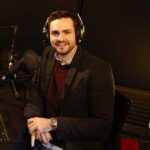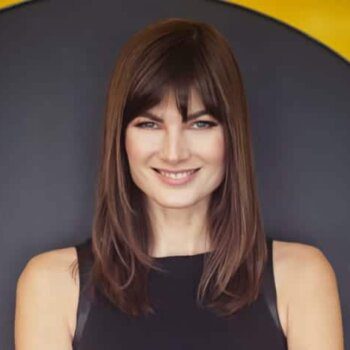The seeds of our primary interface with machine intelligence rest in the humble origins of the vending machine. Here is the brief story of this evolution of self-service.
The Process and Technology of Self-Service
Not that long-ago, shop clerks pulled merchandise for us from high shelves behind a counter. Today, we push squeaky, wheeled, metal baskets around the well-lit warehouses we call supermarkets. Tomorrow, we’ll click a link and a drone will plop a quart of fresh raspberries at our door.
Innovation in retail shopping—as with all service businesses—happens through shifts in business processes and technologies. Automated self-service fuses process and technology so customers can serve themselves.
In the agriculture and manufacturing sectors, automation boosted output for traditional producers like farmers and factory workers. But in the service economy, automation improves the productivity of end users. This raises interesting questions about the future of work, but those will have to wait for a future article.
In this article, I examine the evolution of automated self-service—both its underlying business processes as well as its technologies.
Self-Service Processes
Self-service is, first and foremost, a business process. Business processes are activities that are linked together to generate value for a business. In some cases, the activities are internal—like managing inventory systems at Amazon or assembling a Ford F-150 truck. In others, they are externally focused, such as assisting Safeway shoppers at checkout or helping couples plan their retirement at Schwab.
Self-service is a particular way of organizing business processes for these customer-facing activities. Through it, end users can interact with a business with minimal, and in many cases no, contact with employees. Self-service can reduce labor costs and it can increase operating scale.
Cutting Costs
Self-service kiosks let Alaska Airlines employees spend less time fussing with boarding passes and baggage tags. This saves labor costs and there’s nothing inherently wrong with that. With the right guidelines, automation is part of how society becomes more efficient with its resources over time. The question is how the resulting costs and benefits are shared among stakeholders.
Automated self-service is uniquely abusive when it shifts work from paid employees to unpaid end users. That is simple cost externalization; something that’s particularly galling when it doesn’t add value—like many self-checkout machines at supermarkets. Author Craig Lambert refers to this phenomenon as “Shadow Work.”
Boosting Scale
Self-Service Technologies
While self-service business processes don’t always rely on technological innovation, most of the time they do. Automated self-service has gone through four fairly distinct phases in underlying technology: mechanical, electrical, digital, and now machine learning.
Mechanical and Electrical Devices
Self-service technologies trace back to at least 215 BCE, when Hero of Alexandria developed a coin-operated, holy water dispenser. Its basic mechanical principles were still used overtwo thousand years later to dispense stamps, candy, cigarettes and all kinds of things. Later, as electronics emerged in the 20th Century, vending machines inherited a whole slew of new capabilities. By the 1940s, we had machines for dispensing everything from coffee and ice cream to Campbell soup and even worms.
Digital and Machine-Learning Devices
The Emerging Interface
Self-Service Scale Builds Intelligence
Automated self-service has been driving down the cost of labor for a long time. In fact, you could say that cost-cutting drive is a foundational element in most business automation. It functions as a kind of “code within the code” in enterprises that optimize for shareholder primacy.
What’s new is the way fourth-generation self-service technology uses scale to fuel an upward spiral in intelligence. The move to web interfaces allowed companies to serve people in numbers never before imaginable. With that scale came an ocean of user data that has proven essential to training machine learning algorithms. These algorithms are the source of modern competitive advantage. They are also extending self-service into a growing number of service markets once assumed to be too complex to automate.
Our Point of Contact with Machine Intelligence
Machine learning is thus accelerating the automation of the service economy. Services account for 80 percent of jobs and GDP in the United States. As this huge segment of economic activity automates, it will look very different from earlier automation in agriculture and manufacturing. That’s because services rely on coordination with end users. To automate services, businesses need to automate their engagement with end users.
As more and more of the service economy automates, automated self-service interfaces become increasingly important. When you learn to recognize these interfaces for what they really are, you see that they are everywhere. They already guide our online searches, shopping, banking and ride sharing—and they are really just getting started. More and more of our days will be spent interacting with these increasingly powerful interfaces. Automated self-service is thus becoming humanity’s primary point of contact with machine intelligence.
It is for this reason that it is important to understand the evolution of these systems. Our emerging new partnership with machines will be mediated by the automated self-service interface.
About the Author
This article was written by Gideon Rosenblatt of The Vital Edge. Gideon ran an innovative social enterprise called Groundwire for nine years. He worked at Microsoft for ten years in marketing and product development, and created CarPoint, one of the world’s first large-scale e-commerce websites in 1996. The Vital Edge explores the human experience in an era of machine intelligence.





























